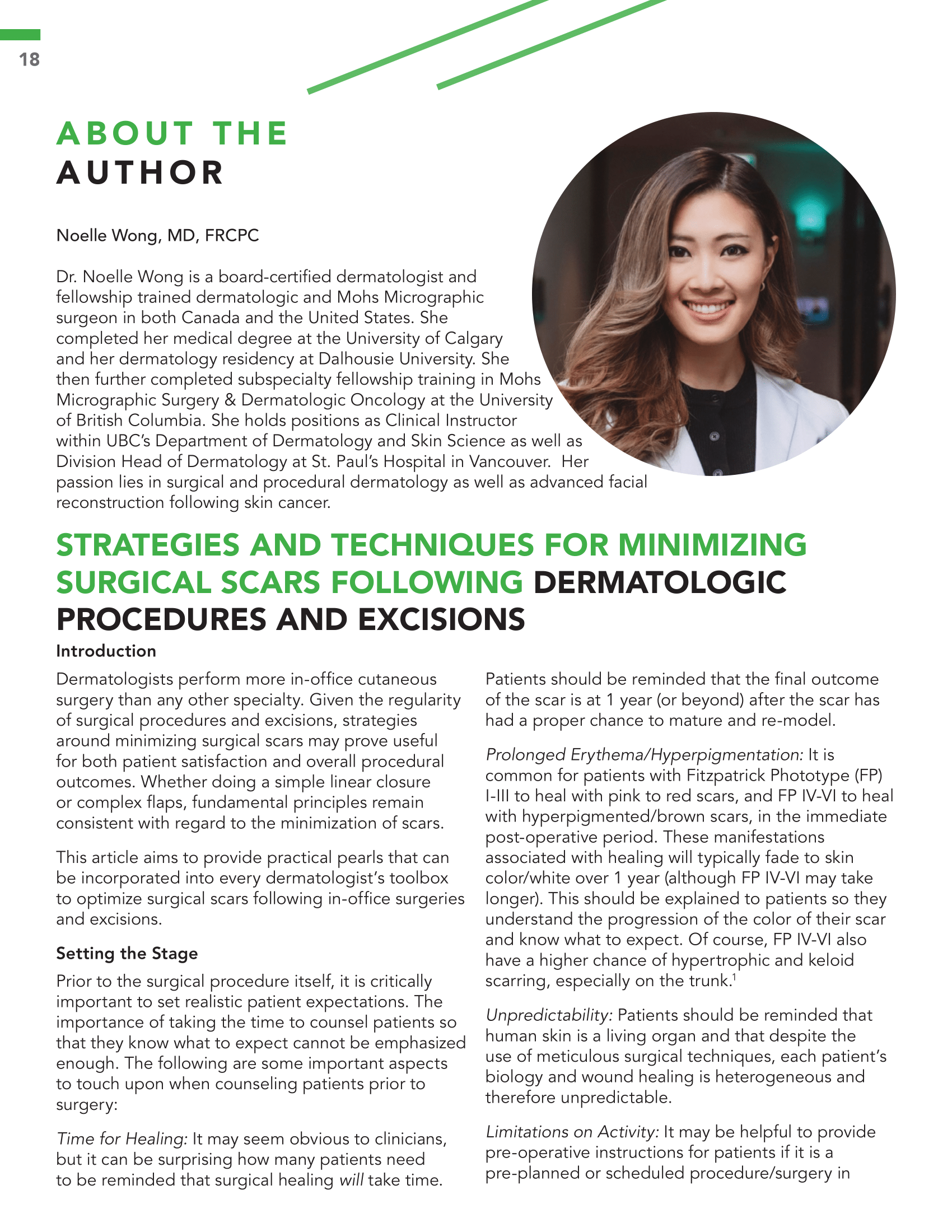Strategies and techniques for minimizing surgical scars following dermatologic procedures and excisions
Abstract
Dermatologists perform more in-office cutaneous surgery than any other specialty. Given the regularity of surgical procedures and excisions, strategies around minimizing surgical scars may prove useful for both patient satisfaction and overall procedural outcomes. Whether doing a simple linear closure or complex flaps, fundamental principles remain consistent with regard to the minimization of scars.
This article aims to provide practical pearls that can be incorporated into every dermatologist’s toolbox to optimize surgical scars following in-office surgeries and excisions.
References
Visscher MO, Bailey JK, Hom DB. Scar treatment variations by skin type. Facial Plast Surg Clin North Am. 2014; 22(3):453-462.
Stasko T, Complications of cutaneous procedures. Roenigk RK, Roenigk HHJ. Dermatologic Surgery Principles and Practice 2nd ed Marcel Dekker NY, 149-175
Robinson JK. Segmental reconstruction of the face. Dermatol Surg. 2004; 30(1): 67-74.
Miller CJ, Antunes MB, Sobanko JF. Surgical technique for optimal outcomes: Part I. Cutting tissue: Incising, excising, and undermining, J Am Acad Dermatol. 2015; 72(3): 377-387.
Nantel-Battista M, Murray C. Dermatologic Surgery Pearls: Enhancing the efficacy of the traditional elliptical excision, J Cutan Med Surg. 2015; 19(3): 287-90.
Miller CJ, Antunes, Antunes MB, Sobanko JF. Surgical technique for optimal outcomes: Part II. Repairing tissue: Suturing, J Am Acad Dermatol. 2015; 72(3):389-402.
Shin TM, Bordeaux JS. How suture technique affects the cosmetic outcome of cutaneous repairs, J Drugs Dermatol. 2014; 13(8):967-969.
Kraft J, Murray CA. The fusiform skin excision: one recipe for success, J Cutan Med Surg. 2011, 15(5): 245-249.
Beidas OE, Gusenoff JA. Deep and superficial closure. Aesth Surg J, 2019; 39(2): 67-72.
Richer V. Scar injection: beyond triamcinolone acetonide. Can Derm Today. 2021; 2(3): 8-10.
Zhou LL, Richer V. Treating keloids with intralesional 5-fluorouracil and triamcinolone acetonide: Aren’t we there yet? J Cutan Med Surg. 2020; 24(2):205-206.
Qiao Z, Yang H, Jin L, Li S, Wang X. The efficacy and safety of botulinum toxin injections in preventing postoperative scars and improving scar quality: A systematic review and meta-analysis. Aesthetic Plast Surg. 2021; 459(5): 2350-2362
Sobanko JF, Alster TS. Laser treatment for improvement and minimization of facial scars, Facial Plast Surg Clin North Am. 2011; 19(3):527-542.


